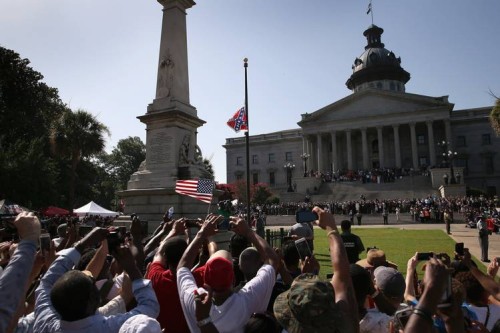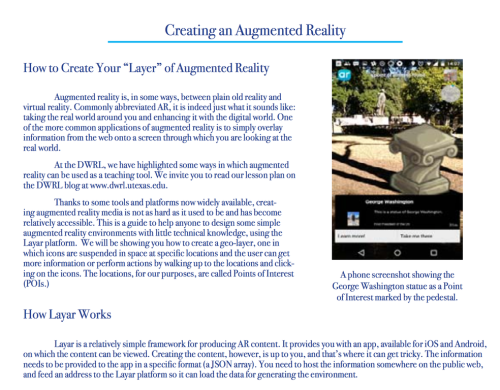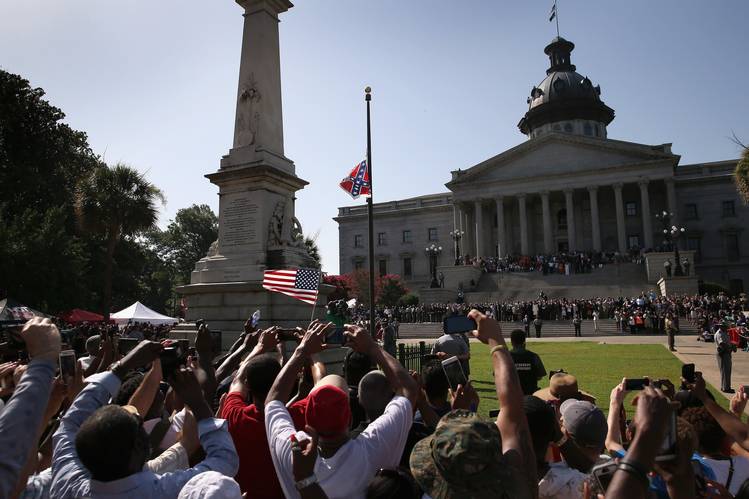At the start of the 2015 fall semester, we (the Augmented Reality Research Group) sat down to decide on our project. Several recent events in the news over the past year had influenced our decision. On June 17th, Dylann Roof, a white twenty-one-year-old male, had just shot and killed nine African Americans, including a state senator, during an evening prayer meeting at Emanuel African Methodist Church, one of the oldest African-American churches in the South.
The fallout from the tragedy consumed the nation in a debate about the appropriateness of Confederate symbols in state institutions. The South Carolina House of Representatives furiously debated whether to remove the Confederate battle flag from the statehouse grounds. Only July 8th, after fifteen hours of debate, South Carolina, the state where the Civil War began, voted to remove the Confederate battle flag.

It must have been in the air, because the spring before the South Carolina House of Representatives vote, The University of Texas’ Student Government passed a resolution to remove the statue of the President of the Confederate States of America, Jefferson Davis, from the UT Main Lawn, which, at the time, featured five other statues, four of which were Confederate leaders. After three of these statues were vandalized, UT President Gregory L. Fenves ordered the removal of the Jefferson Davis statue.
With some of these statues removed, and with the possibility of more to be removed, we began thinking about what students will be missing by not encountering these dated icons in the setting of the University — especially if universities are conceived of as places where students encounter uncomfortable ideas — as well as the statues’ larger role in the national debate on Confederate symbols. To that end, we decided our app should take the empty physical spaces and (as Deb explains in her how-to guide) augment them with a digital icon that represents the missing statue.
By selecting the symbol of the statue, and the action that takes users to a hyperlink, students will have access to not only an image of the statue before it was removed, but also additional resources, including links, photos, audio files, and more. Also, in addition to the removed statues, the remaining statues will also be augmented with resources of these same types. In fact, many of those resources were used to write this very blog post!
Thinking that this idea of augmenting the reality of public spaces might be an useful resource for educators, we decided to create an app which would allow other people, without any technical background, to create similar content. Our app, called the raugmenter, will be open to the public for creating similar augmented reality environments. We envision professors being able to use the creation of such spaces as a collaborative assignment, where students do research and work together on assembling rhetorical arguments and grafting them onto physical spaces.

We also created a how-to guide for our app. It will allow people to make their own tours, like ours of the statues, for their own pedagogical purposes. The goal of the app is not merely to create one augmented reality experience, but to make many possible.
Even though some of this content is ready to be released to the public, such as the resources for the statues hyperlinked above, ultimately, we are still waiting for a subdomain (think “.edu”) on which to host our app. Check back with this space at the beginning of the New Year for that announcement post!


